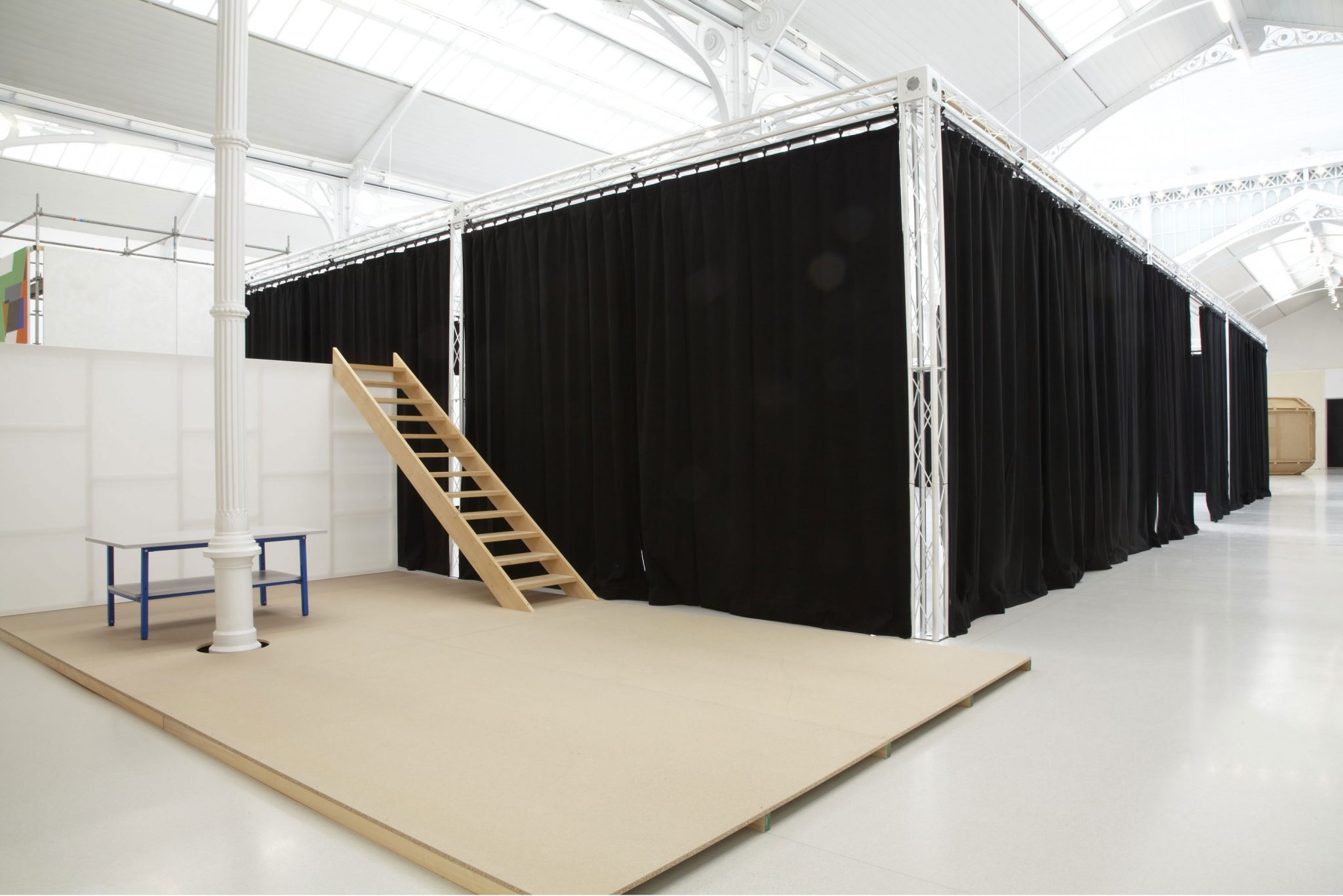The main gallery of Madrid’s Palacio de Velázquez is an expansive, uninterrupted space well suited to theatrical gestures, but few artists have succeeded in pulling off quite such an eloquent coup de théâtre as Heimo Zobernig. As demonstrated by the 40-odd elements that make up this 30-year ‘retrospective’, his practice intersects with architecture, design and theatre while flitting with seeming ease between painting, sculpture, installation and video. Most of all, however, the Austrian artist engages with the staging of art, foregrounding not so much what is exhibited as how.
In the words of James Brown’s 1970 funk classic, Zobernig’s works are ‘talkin’ loud and sayin’ nothing’. Borrowing from the Robert Indiana school of typographical tweets and, at the other extreme, from the modernist tradition of minimal monochromes, Zobernig treats both work-types as throwaway gestures, easily appropriated and slickly executed, but no more significant than the canvases he leaves blank. We find them hung on scaffolding and curtains (lots of curtains), framed by paper scrolls, propped against walls or assembled as sculpture. Or else only present by their absence, as in his museum-style storage racks that remain conspicuously vacated. And not only paintings. When even the curtains are parodied by video representation, it is clear that Zobernig’s irreverent scavenging regards nothing as sacred.
Significantly, all the works here are untitled, the show slipping seamlessly from one installation to the next. In Untitled (1998), stretched canvases of loosely woven jute combine to form an enclosed structure hinting at Richard Deacon’s 1980s aesthetic, while a vast arena of black curtains enshrines nine monochromes executed between 1993 and 2005 (although the dates are extraneous, the works being interchangeable). From 1992, a four-metre cardboard cube richly painted in black gloss references Mecca’s Kaaba and thus Gregor Schneider’s aborted 2005 project for Piazza San Marco in Venice. Mirrored walls in polished aluminium evoke Michelangelo Pistoletto; the metal grids of the painting racks recall Bruce Nauman’s Double Steel Cage Piece (1974). Even the one canvas in which the brushwork lets rip could be a take on Juan Uslé or Bernard Frize.
However, Zobernig’s appropriation of contemporary art is at best generic. These are artworld Rorschach tests, inconsequential in themselves but inviting our collusion in contextualising them within the familiar canon; quotations that, like his monochromes, have been whitewashed so that their reading barely bleeds through.
Voiding the work leaves only the methodology of display and its context. The iron superstructure of the nineteenth-century exhibition hall and the single partition wall, preserved from the previous exhibition, become as important as the works they enclose. In this theatre in the round where the props are laid bare, we become implicated in the staging, the sleights of hand that vouchsafe the seeming neutrality of the white cube and which here are replaced by relational aesthetics-style user-friendliness, interactivity and DIY: a kind of honest shabbiness that points up the tricks of the trade.
This laboratorylike openness draws obvious comparisons with the curatorial modus operandi of the Palais de Tokyo, Paris, except here there is no danger of the institution and its framing upstaging the artist. Zobernig’s deadpan humour has taken over the asylum and, as in Peter Weiss’s Marat/Sade (1963), turned it into a site of theatre all his own.
This article was first published in the April 2013 issue.
